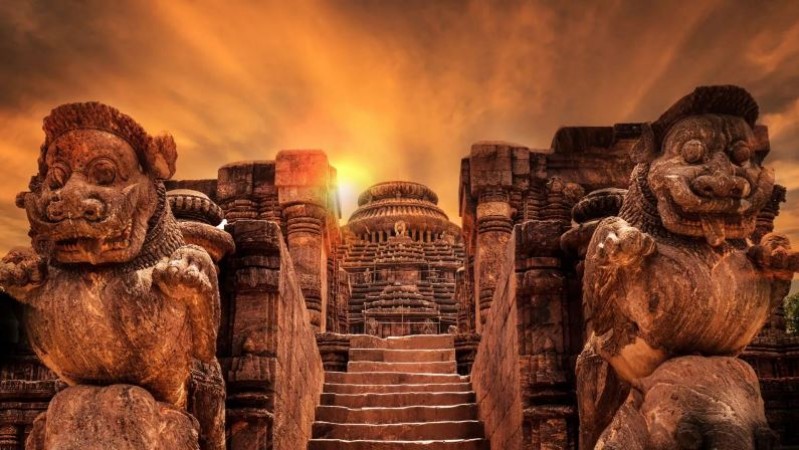
The Koneak Sun temple also known as the Black pagoda is a stunning architectural marvel located in the town of Konark, Odisha. The Konrak sun temple was built in 13th century during the reign of King Narasimhadeva I of the eastern Ganga dynasty between 1238-1250 CE. This magnificent temple is dedicated to the Hindu Sun God, Surya. With its intricate cravings, grand structure, and rich historical significance, the Konark Sun temple stands as a testament to the genius and creativity of ancient Indian architects.
The name "Konark" is derived from two Sanskrit words, "Kona" meaning corner and "Arka" meaning the sun. The temple is designed in the shape of a colossal chariot, with twelve pairs of exquisitely carved wheels representing the twelve months of the year. The chariot is drawn by seven horses, symbolizing the seven days of the week. The entire structure was originally conceived as a celestial vehicle for the Sun God.
Also Read: Sri Ganga Saraswathi Devasthanam Temple
The temple complex is renowned for its detailed stone carvings, which depict a wide array of mythological scenes, deities, celestial beings, and daily life activities. The sculptures showcase the exceptional artistic skills of the craftsmen of that era and provide valuable insights into the culture and traditions of ancient India. Each stone panel tells a story, whether it's a scene from the Mahabharata or Ramayana, or a depiction of dancers, musicians, and erotic figures.
The Konark Sun Temple is the colossal main sanctum, which once housed the towering statue of the Sun God. Unfortunately, the sanctum and the main shikara (spire) of the temple are now in ruins, having been damaged over the centuries by natural disasters and invasions. Nevertheless, the remaining structure still inspires awe and admiration among visitors from around the world.
Also Read: Lingaraja Temple: Oldest and Largest Temple of Bhubaneswar
The temple was designed in such a way that the first rays of the rising sun would pass through the main entrance and illuminate the interior sanctum, casting a divine aura on the deity. This architectural brilliance not only showcases the ancient astronomers' understanding of celestial movements but also reflects the deep spiritual significance associated with the Sun God in Hindu mythology.
The Konark Sun Temple is its precise alignment with the cardinal directions. The temple is oriented towards the east, ensuring that the first rays of the rising sun fall directly on the entrance. The entire complex was constructed using iron beams, magnets, and other scientific techniques, making it a masterpiece of engineering even by today's standards.
Also Read: Mumba Devi Temple: Goddess of Mumbai
The Konark Sun Temple serves as an important pilgrimage site for devotees of Lord Surya. It attracts numerous visitors, especially during the annual Chandrabhaga Mela, a seven-day festival celebrated in February, where devotees take a dip in the nearby Chandrabhaga River to cleanse their sins and pay homage to the Sun God.
Recognizing its cultural and historical significance, the Konark Sun Temple was designated as a UNESCO World Heritage Site in 1984. The government of India and various organizations have taken significant measures to preserve and restore this architectural gem, ensuring its longevity for future generations to admire and cherish.
The Konark Sun Temple stands as a testament to the artistic brilliance and spiritual devotion of ancient India. Its awe-inspiring architecture, intricate carvings, and celestial alignment continue to captivate the imagination of visitors. The temple's historical significance, combined with its rich cultural heritage, makes it an invaluable treasure not only for India but for the entire world. The Konark Sun Temple is a living testament to human ingenuity, reminding us of the timeless beauty and grandeur of our ancient civilizations.
Also Read: Basistha Temple: A divine Abode in Assam
Umananda Temple: Peacock Island Temple